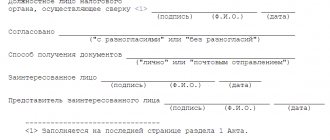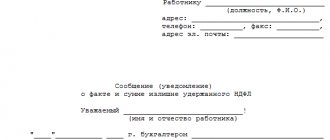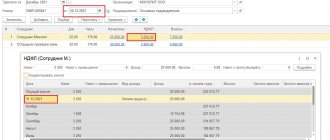What taxes are paid under the simplified tax system?
Operating business entities, whether legal entities or entrepreneurs, have the right to independently choose the applicable taxation system.
If the approved conditions for income level and the number of employees are met, organizations and individual entrepreneurs can switch to a simplified taxation system (STS), which provides for the following procedure for paying taxes:
- “Simplified” are recognized as single tax payers and are exempt from paying VAT, income tax, and property tax. Also, the single tax replaces the payment of personal income tax for individual entrepreneurs for themselves.
- The tax amount is determined based on the chosen tax scheme. Organizations and individual entrepreneurs using the “STS 15%” scheme determine their total income as the tax base without taking into account expenses and pay tax at a rate of 15%. Business entities operating under the “STS 6%” scheme pay tax in the amount of the product of the 6% rate and the tax base (income minus expenses).
- Enterprises and individual entrepreneurs using the simplified tax system are required to transfer tax advances during the reporting year (quarterly), and at the end of the billing period make final tax payments.
Please note that the use of the simplified tax system does not exempt business entities from paying insurance contributions to the Social Insurance Fund and the Pension Fund of the Russian Federation.
Examples:
Calculation of tax refund for individual entrepreneurs using the simplified tax system when purchasing a home
Individual entrepreneur Sidorova M. bought an apartment for 2.5 million rubles. in 2022. Is she entitled to a refund from the 2017 budget if she used the simplified tax system?
Art. 219 of the Tax Code indicates that a tax deduction is made on income taxed at a rate of 13% (personal income tax). The simplified tax system for individual entrepreneurs does not require the payment of this tax, so Sidorova M. will not be able to return the tax from the budget for this year. If a citizen were on the general taxation system, she would have the right to count on a refund. For further examples, we will keep in mind that the citizen is a personal income tax payer.
Obtaining a tax deduction for treatment
Citizen Kuznetsov A. had an operation in 2022 at a cost of 40 thousand rubles. His total income for this year was 280 thousand rubles. He will calculate the amount of refund that Kuznetsov A. has the right to receive in 2022 after presenting all the necessary documents (3-NDFL declaration, 2-NDFL certificate, certificate of payment for medical services, agreement with a medical institution, copy of the license, checks).
280000*0.13=36400 rub. – the tax transferred by the employer for Kuznetsov A.;
280000-40000=240000 rub. – tax base minus the amount of the transaction (funds spent on the operation are not subject to personal income tax);
240000*0.13=31200 rub. – personal income tax amount for 2022;
36400-31200=5200 rub. – the difference between the accrued and paid personal income tax amount, which can be returned from the budget.
Social tax deduction for training
Citizen Makarova S. is studying at a university on a correspondence course and works officially in the organization. For 2022, her earnings amounted to 310 thousand rubles; for the year of study she paid 130 thousand rubles. Let's calculate its return:
310000*0.13=40300 rub. – paid personal income tax;
310000-120000=190000 rub. – tax base (Makarova paid 130,000 rubles, but there is a restriction under clause 2 of Article 219 of the Tax Code: the deduction cannot exceed 120,000 per year);
190000*0.13=24700 rub. – calculated tax;
40300-24700=15600 rub. - return.
Property deduction for the purchase of an apartment
Individual entrepreneur Semenov P., located at OSNO, bought an apartment in 2022 for 2.2 million rubles. His income according to the 3-NDFL declaration amounted to 350 thousand rubles. Let's calculate how much money he can return from the budget for this year.
350000*0.13=45500 rub. – paid tax;
the maximum deduction amount is 2 million rubles (although the cost of housing is 2.2 million rubles), so you can only return 13% of this amount (260 thousand rubles). For the year, individual entrepreneur P. Semenov paid 45,500 rubles, this is the refund amount. The rest (260,000-45,500 = 214,500 rubles) can be returned in subsequent years, subject to payment of personal income tax.
When does an overpayment occur under the simplified tax system?
In order to understand the peculiarities of overpayment of single tax for a “simplified” person, let’s look at a few examples:
Option #1. Overpayment on advances.
Individual Entrepreneur Gavrilov is a payer of the simplified tax system 15% income minus expenses. During 2022, Gavrilov made prepayment tax calculations and transferred the following amounts to the budget:
- 01.18 – 23.606 rub.;
- 04.18 – 38.516 rub.;
- 10.18 – 32.714 rub.
At the end of the year, Gavrilov compiled and submitted a tax return to the Federal Tax Service, in which he reflected the amount of annual income (584,990 rubles) and the amount of tax for the year (584,990 rubles * 15% = 87,748.50 rubles).
Since the total amount of advance payments (23,606 rubles + 38,516 rubles + 32,714 rubles = 94,836 rubles) exceeded the amount of Gavrilov’s tax obligations at the end of the year (87,748.50 rubles), the entrepreneur had an overpayment according to the Tax Code in the amount of 7,087.50 RUB (94,836 RUB – 87,748.50 RUB).
Option #2. Error when transferring payment.
Based on the tax return filed by Factor-5 LLC (payer of the simplified tax system) to the Federal Tax Service, at the end of 2022, the enterprise is obliged to make a final payment for the single tax in the amount of 104,770 rubles.
When filling out the payment order, the accountant of Factor-5 LLC made a mistake, and as a result, the amount of 107,770 rubles was paid to the budget, and an overpayment of 3,000 rubles arose. (RUB 107,770 – RUB 104,770).
Option #3. Overpayment based on an updated declaration.
Mustang LLC is a payer of the simplified tax system 15% income minus expenses. During 2022, the accountant of Mustang LLC made calculations and transferred the following advance amounts to the budget:
- 01.18 – 45.002 rub.;
- 04.18 – 48.108 rub.;
- 10.18 – 49.100 rub.
In January 2022, the accountant of Mustang LLC submitted a declaration to the Federal Tax Service, according to which the tax amount for 2022 is 203,050 rubles. Thus, for the final calculation, the Mustang accountant should pay the amount of 60,840 rubles to the budget. (RUB 203,050 – RUB 45,002 – RUB 48,108 – RUB 49,100). The final payment was made on January 12, 2019 (the debt was transferred).
On January 25, 2022, the accountant of Mustang LLC submits an updated tax return to the Federal Tax Service, according to which the total tax liability for 2022 is 181,405 rubles. Thus, Mustang LLC incurred an overpayment of tax in the amount of 21,645 rubles. (RUB 203,050 – RUB 181,405).
What to do if you yourself overpaid tax
You can overpay tax by mistake: for example, you or your accountant made a mistake when calculating tax or filling out a payment order.
If an error occurred in calculating the tax, then Article 81 of the Tax Code requires submitting an updated declaration for this tax to the tax office if the error led to an understatement of the tax. When overpaying tax, submitting a “clarification” is a taxpayer’s right, not an obligation.
In accordance with Article 78 of the Tax Code, overpayment can be:
- offset against the subsequent payment of the corresponding type of tax;
- offset against debt repayment for relevant types of taxes, penalties, and fines;
- return to the company's bank account.
In order for the tax authorities to count the overpayment against further payments for the same or other taxes, the company must submit an application in the form approved by order of the Federal Tax Service of Russia dated March 3, 2015 No. ММВ-7-8/ [ email protected] Having received this document, the tax authorities in within 10 days they will make a decision on the credit. The inspectorate is given another five days to inform the company of its decision.
Here is a sample application for a “simplified” tax credit:
If you want to pay off arrears on one tax by overpaying on another, it is not necessary to submit an application.
The inspectors will decide on such offset independently. They will do this within 10 days after they discover the overpayment, or after your company and the inspectorate sign a joint reconciliation of taxes paid.
Having made a decision, tax authorities are obliged to inform you about it within five days. However, this does not mean that, having discovered an overpayment yourself, you should wait until the tax authorities do it.
Having found the “extra” payment before the inspectors, the company can apply to offset the arrears. The tax office must refund the overpaid tax within one month from the date of receipt of the application.
However, this will happen after the overpayment is offset against your debt to other taxes of the corresponding type.
As a result (if you have such a debt), the difference between the overpayment and the repaid debt will be “returned” to your current account (if, of course, the amount of overpaid tax was sufficient).
If the tax office violates this deadline, it will have to pay you interest for each day of delay based on the refinancing rate of the Bank of Russia.
EXAMPLE On March 4 of this year, Passive LLC brought to the tax office an application for a refund of an overpayment of tax in the amount of 20,000 rubles. The monthly refund period expired on April 4, but the money was credited to the account only on April 20, that is, the delay was 16 days. The refinancing rate is all this time was equal to 10.5% per annum. The tax office must pay interest to “Liability” in the amount of: 20,000 rubles. × 10.5%: 365 days. × 16 days = 92 rub.
You can offset overpaid amounts only within the limits of taxes of one type (Clause 1, Article 78 of the Tax Code of the Russian Federation). For example, you can offset federal taxes only against federal taxes, regional taxes against regional taxes, and local taxes against local taxes. It will not be possible to direct an overpayment of federal taxes towards regional or local taxes, and vice versa. For example, the simplified tax system, UTII, personal income tax are federal taxes, and land taxes are local taxes (Articles 13 and 15 of the Tax Code of the Russian Federation). This means that the overpayment under the simplified tax system cannot be used to pay off the arrears of land tax (letter of the Ministry of Finance of Russia dated December 13, 2011 No. 03-05-06-01/86).
By the way, it is allowed to offset the overpayment of tax to one budget and the underpayment of the same tax to another budget.
If the overpayment is not credited or returned, you can appeal to the arbitration court.
Tax authorities often refuse to offset or refund an overpayment, since the amount due to the fault of the bank did not go to the budget or extra-budgetary fund.
They are wrong: the tax is considered paid from the moment the bank accepted your payment order for its transfer. Of course, provided that there was enough money in the account.
Read about what actions an organization or entrepreneur should take to offset the “simplified” tax in the “STS in practice” berator.
When can you return an overpayment using the simplified tax system?
The overpayment of the single tax incurred by the “simplified” person is subject to return to the current account if the payer has no debt on this tax. It should also be noted that the overpayment is not refundable if the payer has an outstanding fine or penalty accrued for a single or other federal tax.
If there is an arrears according to the Tax Code, or an unpaid fine or penalty, the amount of the overpayment is taken into account towards the repayment of the debt, thus only the balance of the amount (overpayment minus the withheld arrears/fine/penalty) must be returned to the current account.
How to find out about overpayment of taxes as an individual entrepreneur
There are two ways to clarify this issue: receive a notification from the Federal Tax Service or deal with it yourself (through the taxpayer’s personal account).
- Notification from the Federal Tax Service
May take the form of a telephone call. For example, at the Federal Tax Service they found an overpayment and call you on your mobile, introducing themselves something like this: “Hello, this is the tax office.” In this case, be sure to write down which branch you are calling from and what tax was paid in excess. Pay special attention to recording the phone number or address of the branch where your overpayment was detected.
If excess tax is detected, the Federal Tax Service may require documentation, such as acts, contracts, invoices and even a cash register for double-checking. There is no point in obstructing, because these measures serve your interests, and, moreover, refusal to implement them can result in a fine of about 10,000 rubles. And the sooner you provide the data and allow the tax inspectorate to clarify everything, the sooner you can return the erroneously transferred funds.
- Taxpayer personal account
You can use your personal account on the official website of the Federal Tax Service; Among other things, it helps to find out whether overpayments exist and monitor the progress of applications for their return. If you have an EDS (electronic digital signature), you will be able to transfer your reporting and contacts with the tax office into digital format, giving up paper documents and personal visits.
Just register on the Federal Tax Service website and you will be able to track the entire progress of your tax payments in your personal account.
There is another way. You can clarify the existence of an overpayment and return it through a personal visit to the tax office and the Russian Post. If it is more convenient for you to personally ask for information and have all relationships fixed on paper, you can choose this path. Just while reading the article, replace “electronic appeals” with “visiting the tax office at the place of registration” and “letter with a list of attachments” - in general, the algorithm is common.
Overpayment under the simplified tax system: how to return money to the organization’s account
If a tax overpayment has occurred for a legal entity using the simplified tax system, then, according to the general procedure, the amount of the overpayment can be returned to the organization’s current account only if there is no tax debt.
Below are step-by-step instructions that will help the company’s accountant understand the procedure for returning an overpayment according to the simplified tax system.
Step 1. Confirmation of overpayment
Before contacting the Federal Tax Service for a refund, you must confirm the existence and amount of the overpayment.
If the overpayment arose due to incorrectly reflected amounts in the tax return, then the organization should submit a “clarification” with the correct data to the Federal Tax Service. Next, you need to carry out a reconciliation with the fiscal service and sign the corresponding act (the form can be downloaded here ⇒ Reconciliation report with the Federal Tax Service (form)).
Why is there an overpayment?
Tax payment when applying such a taxation system as the simplified one is carried out quarterly. And at the same time, the cumulative total method is used. That is, each subsequent calculation made will include additional information about the formation of the tax base. The most current data is for the last quarter. It would be advisable to carry out the last calculation immediately for 4 periods of the reporting year. Based on the results obtained for the first 3 quarters, advance payments are made according to the simplified tax system and reports are not submitted to the tax authority. The final amount of tax payable under the simplified tax system is reflected in the declaration submitted to the tax office at the end of the year. But where does the overpayment of taxes come from? It may arise from the amount of payments paid during the year, which may exceed the entire amount of tax accrued for the tax period. That is, it turns out that the simplified tax system for payment at the end of the year is not only not accrued, but covers all payments paid during the year. This may occur due to the fact that in the 4th quarter the company may incur additional expenses that are taken into account in the taxable base. Due to these expenses, the volume of the base is significantly reduced, and at the end of the year an overpayment occurs.
How to offset an overpayment according to the simplified tax system
The entrepreneur (organization) retains the right to offset the amount of overpayment arising under the single tax of the simplified tax system against upcoming payments. Let's consider the accountant's procedure in this case:
- The organization's accountant carries out a reconciliation of mutual settlements with the Federal Tax Service, signs a reconciliation report, on the basis of which the amount of the overpayment is approved.
- The payer applies to the Federal Tax Service with an application to credit the overpayment to future payments. The application must be drawn up on an approved form (Appendix No. 9 of the Federal Tax Service order NММВ-7-8/9 dated 03/03/2015). The application form can be downloaded here ⇒ Application for offset of overpayment of tax.
- After reviewing the application and conducting a desk audit, the Federal Tax Service notifies the payer of the offset of the overpayment.
Answers to common questions
Question: How does a company or individual entrepreneur find out about an overpayment?
Answer: A company or individual entrepreneur can find out about overpayment of taxes either independently or through a message received from the tax office. In the second case, the inspector of the Federal Tax Service notifies the company of the overpayment within 10 days from the date of establishment of this fact. He can report this by telephone, by mail, or through an electronic document management system.
Question: Can an application from a taxpayer for the return of an overpayment trigger an audit by the tax authority?
Answer: Yes, an application received from a taxpayer for a credit or refund of an overpayment may serve as a reason for conducting a desk audit. This is especially true in cases where the taxpayer submits an updated return with a lower tax amount, and after that an application for a refund is sent.
Possible consequences for unrefunded overpayment of taxes for individual entrepreneurs
What happens if you do not file the excess tax refund? No penalties will be charged and no penalties will follow.
Most likely, your inspectorate will take this excess into account in a future period of the same tax. For example, in 2022 you overpaid transport tax; You did not submit an application to return it. In this case, the Federal Tax Service will simply reduce your transport tax for 2022 by this amount.
If you stopped using corporate transport and, accordingly, paying tax on it, and did not return the overpayment, the tax office will not take any action against it in the new period. Here you have three years from the date of payment of the excess to return it or take it into account in another form of tax. If you don't do this, the money will simply disappear.
Is that exactly what happened? Then it is better to write off the outdated overpayment under the guise of a “bad debt.” This is the name of the amount that cannot be returned for objective reasons, such as the bankruptcy of the debtor company or the expiration of the permissible statute of limitations.
In accounting, a written-off debt is treated as an expense that is covered by income, resulting in the convergence of debits and credits. As a result, the amount of income subject to taxes decreases. The Federal Tax Service perceives debt write-off as a reduction in tax payments, so it carefully checks (sometimes more than once) cases of loss write-off.
The order of the Ministry of Finance on accounting allows you to write off a non-refundable overpayment as a bad debt, but in a real situation of this kind you may be refused. Here the actions will depend on the amount in question and whether it would be beneficial for you to have it written off. If the answer is yes, enlist the help of qualified lawyers and accountants who will bring this issue to a victorious conclusion.
Nuances of refunding overpayments on taxes for individual entrepreneurs
1. First of all, find out which Federal Tax Service you need to contact.
This will depend on your place of registration, the region where you operate, and the type of taxation you prefer.
For the most part, taxes are paid at the place of registration of the individual entrepreneur, which is based on his registration. For example, a person is registered in the Tver region, which means that his registration as an individual entrepreneur will be attached to this region. At the same time, he can carry out activities in the Nizhny Novgorod region, but he will still fulfill tax obligations in Tverskaya.
Registration of an individual entrepreneur at the place of his official residence does not at all limit the field of his activities - it can be freely carried out within the entire Russian Federation. You will not need to change your place of registration for this.
An entrepreneur's tax obligations correspond to the rate of the region where he is registered. For example, an individual entrepreneur chose the simplified tax system and registered in Crimea, where he is registered. He runs his business in Moscow. The tax rate in Crimea is 3%, and in Moscow 6%. Tax payments are subject to a rate of 3%. If they are carried out at the place of business (6%), the individual entrepreneur pays them in error and in excess.
However, some entrepreneurs are entitled to tax binding to another region. When are there exceptions?
- Patent applies. In this case, the individual entrepreneur is subordinated to the tax inspectorate at the place where the patent was acquired. In addition, there cannot be an overpayment here, because tax obligations in this option are fixed and are included in the initial cost. At the same time, all other taxes continue to be paid in accordance with the region of residence of the individual entrepreneur.
- UTII is applied. Here you will need to register only with the tax office whose jurisdiction is indicated first in your application to conduct business. However, you will need to submit reports to different inspectorates - according to the regions of the country or intra-city territories that have separate tax authorities where you conduct your business.
- The simplified tax system is applied, commercial real estate has been purchased where the activity is carried out. In this situation, registration is required at the place of purchase - there you will pay taxes on the real estate itself, and others - as before, at the place of your registration.
The taxation system that applies in your case can be clarified in the taxpayer’s personal account.
Important Note:
If there was an overpayment, and you registered with several inspectorates, to get the money back, contact exactly the one where the excess payment was sent.
2. Be sure to assist the Federal Tax Service in establishing the overpayment.
Reconciliation with the budget (as well as a certificate of the status of settlements) will help with this. These measures are not mandatory, but help confirm the excess tax payment and return it sooner.
Reconciliation of your calculations with the budget is information about how much money you were supposed to transfer over a certain period and how much was actually paid. For example, in 2022, the tax liability was 25,000 rubles - and you (let’s say, by mistake) sent 250,000 rubles. All this will be reflected.
It is convenient to carry out such a verification procedure from your personal account. In the “Calculations with the budget” section, select “Submit an application to initiate the procedure...”, and then follow the algorithm that will be proposed.
3. Reconciliation will take 10-15 business days.
You can request a certificate about the status of your payments to the budget. It is not related to the reconciliation process and may well be issued in parallel. This document reflects overpayments and debts as of a specific calendar date. You can also request it from your personal account: in the “Get a certificate” section, click “Get a certificate on the status of tax payments...”, then follow the instructions.
4. Preparation of the certificate takes approximately 5 working days.
Don't agree to re-apply. It may happen that an individual entrepreneur submits an application for a refund of the overpayment, then an act of reconciliation of mutual settlements with the Federal Tax Service - and at this moment he is sent to write a new application. Refuse: according to the law, one is enough.
The timing of the decision on the refund of funds will depend on whether you submitted your application immediately with a reconciliation report or initially without it, that is, in two stages.
- If both documents are submitted at once (and also if the tax office does not find it necessary to check), the decision will be made within 10 days.
- If the tax office conducts an audit, the result will take 20–25 days.
When talking about the three-year allowable period within which an overpayment can be returned, the starting point does not mean the date of discovery of the tax surplus or submission of the application, but the date of submission of the declaration.
The result of your request, as well as the status of its consideration, can be tracked through your personal account.
Let us remind you once again: the refunded funds will arrive approximately a month after a positive decision.
If this period has expired and the money has not arrived in the current account, the Federal Tax Service will pay you interest for each overdue day. The percentage will depend on the current refinancing rate of the Central Bank (for example, 7.75% per annum).






